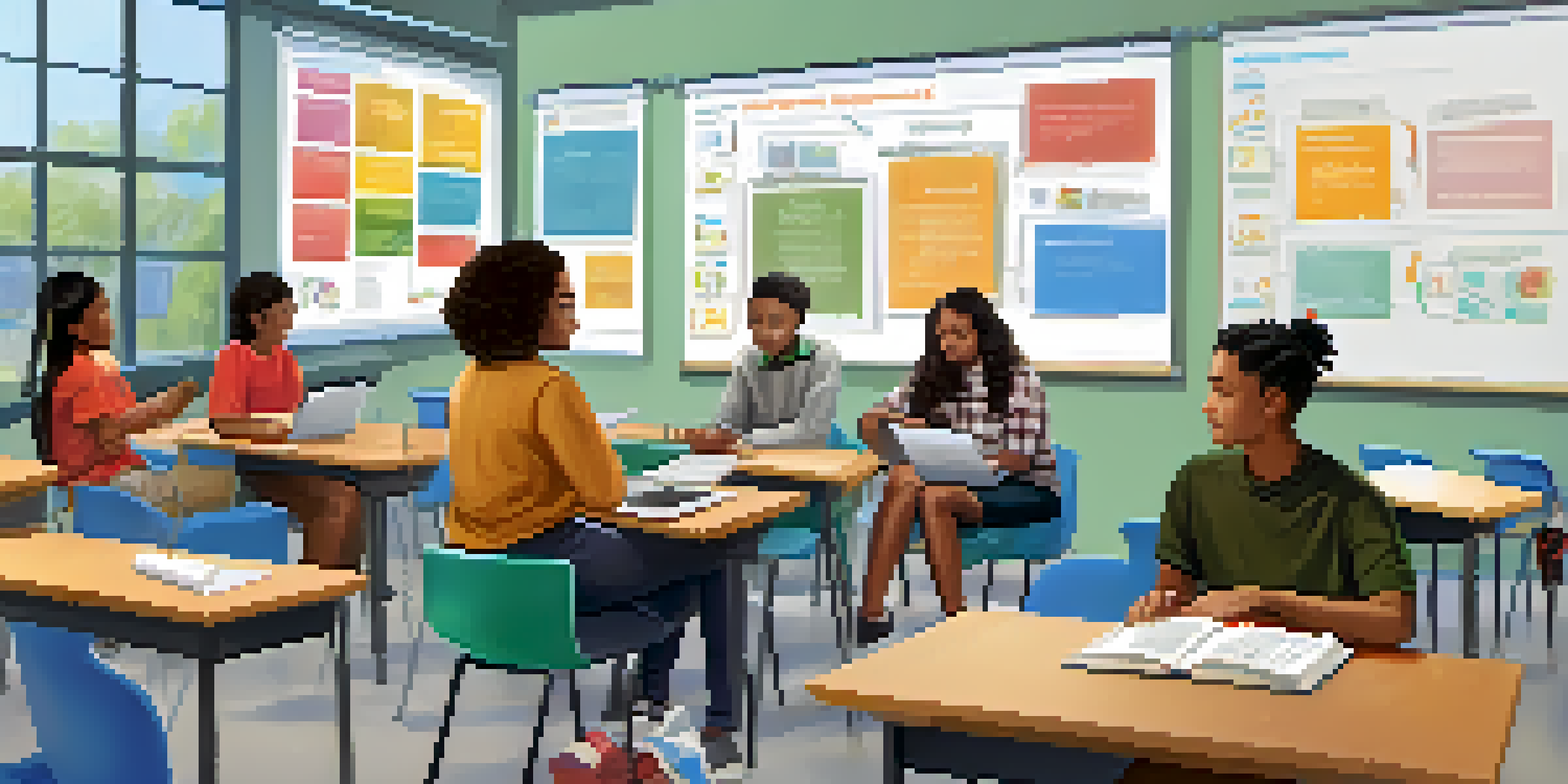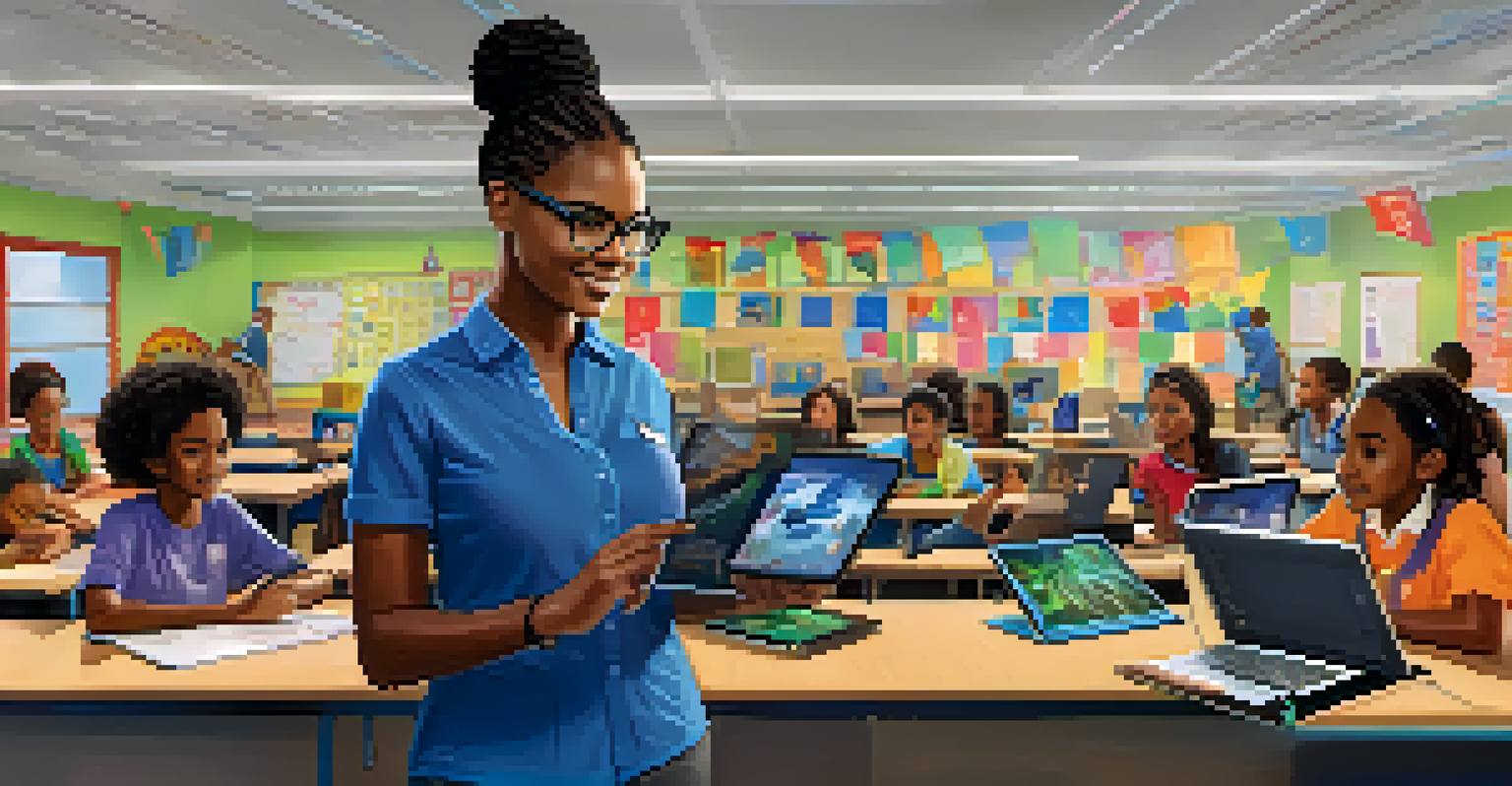Key Benefits of Flipped Classroom for Student Engagement

What is a Flipped Classroom and How Does It Work?
A flipped classroom is an innovative teaching model that reverses traditional learning. Instead of introducing new content in class and assigning homework afterwards, students first explore new concepts at home, often through videos or readings. Then, class time is dedicated to discussions, projects, and collaborative activities that deepen understanding.
In a flipped classroom, students take ownership of their learning, fostering independence and self-motivation.
This approach allows students to learn at their own pace. They can pause, rewind, or revisit content as needed, which caters to different learning styles and speeds. When they come to class, they are better prepared to engage with the material and participate in meaningful conversations.
In this environment, teachers transition from being the primary source of information to facilitators of learning. They can spend more time addressing individual student needs and fostering a supportive classroom atmosphere, enhancing overall engagement.
Increased Student Responsibility and Ownership
One of the standout benefits of a flipped classroom is that it encourages students to take ownership of their learning. By shifting the initial learning phase to home, students are responsible for managing their time and resources. This fosters independence and self-motivation, essential skills for academic and life success.

When students actively prepare for class, they cultivate a sense of accountability. They know that their contributions during class discussions rely heavily on their prior knowledge. This shift promotes a proactive attitude towards learning, motivating students to engage more deeply with the material.
Empowered Student Learning
Flipped classrooms encourage students to take ownership of their education by engaging with content at their own pace and preparing for active participation in class.
As students become more engaged, their confidence grows. They are not just passive recipients of information; they are active participants, which can lead to improved academic performance and a more positive attitude toward school.
Enhanced Collaboration Among Students
Flipped classrooms create an environment ripe for collaboration. With the basic content covered at home, class time can be devoted to group work and discussions, allowing students to learn from one another. This peer-to-peer interaction not only reinforces learning but also builds essential social skills.
Technology is best when it brings people together, and a flipped classroom does just that by enhancing collaboration and interaction.
During collaborative activities, students can tackle complex problems together, leading to deeper understanding. They can share insights, ask questions, and challenge each other's viewpoints, fostering a richer educational experience. This teamwork mirrors real-world scenarios, preparing students for future collaborative endeavors in college and their careers.
Moreover, working in groups can help students feel more connected to their classmates. This sense of community can enhance their overall school experience, making them more engaged and invested in their education.
Flexible Learning Environments for Diverse Needs
Flipped classrooms cater to diverse learning styles and needs, offering a flexible learning environment. Students can engage with content in various formats, such as videos, interactive quizzes, and readings, allowing them to choose what resonates best with them. This variety can make learning more appealing and effective.
Additionally, students who may require extra help can spend more time on challenging topics at home before seeking assistance from the teacher. This personalized approach ensures that everyone can progress at their own pace, thus minimizing frustration and maximizing comprehension.
Collaborative Classroom Dynamics
This model fosters enhanced collaboration among students, allowing them to learn from each other through discussions and group activities.
By accommodating different learning preferences, flipped classrooms ensure that all students have an opportunity to thrive, fostering a culture of inclusivity and engagement.
Improved Teacher-Student Interactions
In a flipped classroom, the dynamic between teachers and students shifts significantly. With more time available during class for interaction, teachers can provide personalized feedback and guidance. This closer relationship can lead to a more supportive and engaging learning environment.
Teachers can spend one-on-one time with students, helping them clarify doubts and delve deeper into topics of interest. This personalized attention can significantly enhance student engagement, as they feel valued and understood.
Moreover, teachers can utilize class time to assess student understanding in real-time, allowing for immediate adjustments to their teaching strategies. This adaptability ensures that lessons remain relevant and engaging for all students.
Promotion of Critical Thinking Skills
Flipped classrooms naturally promote critical thinking skills among students. With the foundational knowledge acquired at home, class time can be devoted to applying that knowledge in practical, real-world scenarios. This application encourages students to think critically and creatively about the material.
By engaging in discussions and problem-solving activities, students learn to analyze situations, evaluate different perspectives, and make informed decisions. These skills are not only vital for academic success but are also essential for navigating life beyond the classroom.
Critical Thinking Development
Flipped classrooms promote critical thinking by shifting focus to applying knowledge in real-world contexts during class time.
Furthermore, as students engage in higher-order thinking, they become more invested in their learning. This heightened engagement can lead to a deeper appreciation for the subject matter and a desire to explore topics further.
Enhanced Technology Integration in Learning
Flipped classrooms inherently encourage the integration of technology into learning. As students access video lectures and online resources at home, they become more comfortable with various tech tools. This familiarity can enhance their overall educational experience and prepare them for a technology-driven world.
Teachers can use a variety of platforms and applications to create engaging content, from interactive videos to gamified quizzes. This diverse use of technology can make learning more interactive and enjoyable, capturing students' interest and boosting engagement.

Additionally, technology allows for easy tracking of student progress. Teachers can analyze data on student performance and engagement, enabling them to tailor their instruction to meet individual needs more effectively.